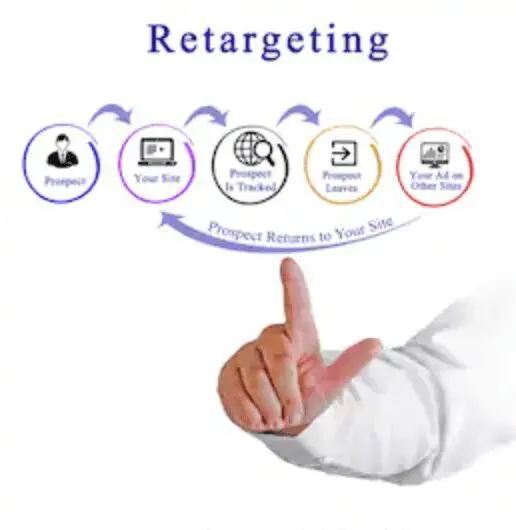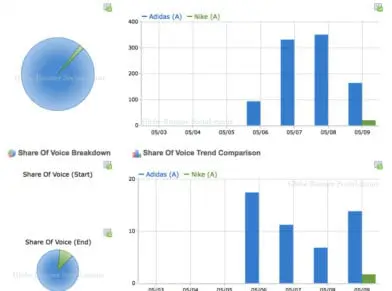Tips on Launching a Retargeting Ad Campaign

If you’ve ever visited a website to research a product, then later see an ad pop up for that exact product, you haven’t just experienced an amazing coincidence. No, you’ve just experienced the magic of retargeting.
Retargeting works on the premise that you can reach consumers when they are ready to make a purchase. Sure, purchasing online makes window shopping easy, but it also means buyers can get sidetracked more easily by an email, IM, phone call, crying baby, knock on the door, etc. However, if they’ve lost their attention, don’t worry; retargeting will get it back.
In the event you’re wondering whether retargeting is worth it, consider this—according to several studies, the average conversion, or purchase, rate for ecommerce websites is only around 2%. That means for every 100 visitors to your site, you’ll make roughly 2 sales. That’s a lot of lost revenue due to attention span interruptions. Without retargeting, you’re hoping those 98 come back. Hope is a bad marketing strategy.
Here’s how retargeting works
Retargeting works by placing a piece of code (AKA pixel) on your website that drops a cookie into each visitor’s browser. So, when they’re browsing on the Internet, they’ll see an ad for your website. Again, it’s not magic; it’s smart marketing. Also, it’s immediate. The second they leave your site, they’ll begin seeing your retargeting ads on sites that host native or display ads.
There are a number of advertising vehicles from which to select if you’re interested in launching a retargeting campaign. There are a slew of vehicles, including Facebook, Instagram, and LinkedIn, to name a few. And then there’s Google Ads, the granddaddy of them all. Google shows your retargeting ad(s) across its vast Google Display Network, which boasts well over 2 million websites.
If you’re ready to enter the world of retargeting, consider the following tips to help ensure you get the most from your retargeting campaign.
Too much is too much
Yes, it’s exciting knowing that you can track website visitors around the Internet and flash your ad in front of them. However, showing that ad too much can actually reduce its effectiveness, not to mention it will cost you more. If they see your add too much, it no longer carries the weight that it does if they see it sparingly. How to fix this? Cap the number of times a visitor can see it in a time frame of your choosing. You can set daily, weekly, or monthly limits, and by ad level, ad group, or per campaign.
If you’re running multiple campaigns, you may want to choose a maximum number of impressions one visitor will see. Remember the info about visitors seeing too many ads? This can apply. Note that the word can is in italics because there’s a good chance you’re running different ads and messaging per campaign. If you set the maximum number of impressions that a single visitor can see in a week, multiply that by the number of campaigns you’re running. That’s the real number of impressions.
Segment your Audience
Think about who is visiting your site—men, women, age, parental status, household income, etc. Consider where visitors are going on your website based on these demographics, along with where they probably are in the buying cycle. Sure, you can run a retargeting campaign that attracts anybody who has visited your website, but that’s not going to convert into sales like a campaign targeting particular demographics. You probably have a pretty good understanding of the types of visitors to a page and the products they’re interested in. Then, craft your retargeting campaigns and messaging to better address particular needs and interests. Is a 55-year-old man checking out a pair of Vans checkerboard shoes. Probably not.
In the event you’re asking yourself How does Google know an Internet browser’s demographics?, it’s a good question. Here’s the answer. Google makes assumptions about all of us based on where we go on the Internet, what we purchase, and a spate of other things. Google gleans information about all of us from our interactions with sites on their display network. On mobile devices, Google does the same and also gets demographic data based on applications users’ access.
Retarget ads based on visitors’ behavior

Basically, there are 2 kinds of people who visit your website: ones interested in what you have to offer, and all the others. We’ll call them uninterested. Why pay for ads to target them? If they spend a few seconds on your site, are they interested enough for you to spend ad dollars targeting them? Probably not. You want your ad to be seen by the ones who visit several pages, peruse a variety of products, and spend time on your site. They’re the ones with good intentions and the ones you want to see your retargeted ads.
Campaign Duration
This will require a bit of testing on your part. For a conversion campaign, it’s a good idea to run ads for the length of the sales cycle. And, of course, this will have to adhere to your budget. However, you may find that running a campaign the length of a predetermined sales cycle may not be the best use of ad dollars in the event the metrics indicate that the campaign has lost its steam. And, once again, target certain demographics. If you spray and pray you’ll exhaust your budget much faster. If you’re selling men’s shoes, what’s the point in targeting women? Actually, bad example; women buy men’s shoes more often than men. Maybe a better example is fishing rods or camping gear.
Also, you can set up campaigns seasonally to kick off and end on predetermined dates. For instance, if your company hangs Christmas or holiday lights, you’ll want to spend your marketing dollars during that desirable advertising window.
Don’t set-it-and-forget regarding your creative
If you’re experiencing dwindling success from your retargeting ads, ask yourself one simple question: Am I running the same ad? If you change up your ad copy, that’s great, but change the look, as well. Remember that stuff about visitors getting tired of seeing your ad? Well, maybe it has to do less with seeing your messaging and more about the experience. If they’ve seen too much of the same thing, you’ll lose their attention. Well, grab it back with something different. You’ll probably be surprised how this will buoy your results. Sure, it’ll take a little more work, but it will pay dividends.
Speaking of creative, get familiar with all the ad sizes you’ll need to consider. Take advantage of your resources; Google provides great information that will remove a lot of the mystery—Google Image Ad Requirements.
Retargeting ads, like any type of online advertising, is a great tactic to include in your digital marketing strategy. But it’s not a set-it-and-forget it proposition. It takes time and effort—and ongoing monitoring—to get the results you’re looking for, both in sales and the most efficient use of your advertising budget.
Contact the experts in online advertising
If you need help with your online marketing efforts, Globe Runner is the partner you’re looking for. We are here to help inject your digital marketing initiatives with rocket fuel and launch it to success. If you’re ready to blast off, call us at (972) 538-0260 for a free digital marketing consultation.




















